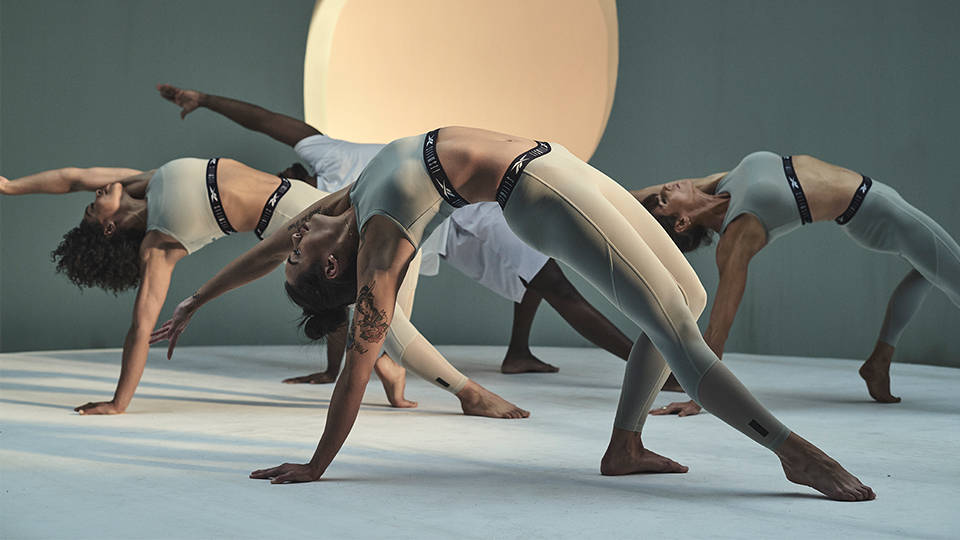
For many countries around the world, May represents mental health awareness month. The goal is to raise awareness of the challenges people face with their mental health, as well as to promote positive solutions – an area where clubs and fitness facilities have an important role to play.
Clubs have long been hailed for the physical health benefits they bring to communities, and are increasingly shown to be a key pillar for supporting mental health as well. There are numerous studies demonstrating how general exercise supports good mental health and this has become particularly significant since the outbreak of COVID-19, which has had a devastating impact on mental health across the globe.
According to the American Psychological Association’s March 2022 Stress in America study, the COVID pandemic has taken a substantial toll on people's mental health, with 58 percent of Americans reporting they experience stress every day as a result of the pandemic. Meanwhile, a host of other studies around the world have found that people are experiencing high symptoms of stress, anxiety, and post-traumatic stress disorder since the outbreak of the pandemic.
With much of the world having spent the last two years in isolation, people are seeking community and connections on a personal level, particularly when it comes to fitness. The 2021 Global Fitness Report found two-thirds of gym members (67%) prefer working out in groups, with group exercise classes now the single most popular gym activity, outstripping both strength and cardio training.
By offering engaging social exercise experiences, clubs have the opportunity to become the backbone of communities, assuming the role previously filled by bars and places of worship – whose numbers continue to dwindle. In addition to the societal impact, there’s also a clear business case for tailoring services towards promoting positive mental health – a recent Global Wellness Institute (GWI) report found the fast-growing global mental wellness economy is now worth $121bn.
“There is huge potential for fitness facilities to reach beyond their current catchment and bring tangible impacts for large sections of the population facing health issues that wouldn’t have traditionally incorporated exercise as part of the solution,” says Bryce Hastings, Head of Research at Les Mills.
“Physical activity truly is the miracle cure and the more we can demonstrate this with tangible health outcomes derived from science-backed workouts, the sooner clubs will be able to serve broader sections of the population and drive us closer towards a truly fitter planet.”
As we know, regular exercise offers so much more than building strong lean muscles and a healthy heart – it also brings a wealth of “above-the-neck” benefits. Exercise has been linked to everything from boosting brain power and helping control addiction, to inspiring creativity and reducing stress. So how do you promote these messages to your club’s audience and join the dots between physical exercise and mental wellbeing? Here are six top tips to share with your members to help them get the most mental benefit from their workouts:
#1 Find your sweet spot – moderation is key
You don’t need to be a hardcore exerciser to reap the rewards. Experts say a moderate approach with shorter workouts will have the most profound effect on your mental wellbeing. One study of 1.2 million US adults found that people who exercise for 45-minute sessions enjoy better mental health than those who sweat it out during marathon workouts. The research also showed that three to five days of exercise a week was the sweet spot, giving people a bigger reduction in poor mental health days than those who didn’t exercise at all, as well as those who worked out over five times a week.

Scientists exploring how exercise eases negativity recommend four aerobic exercise sessions a week to reap significant psychological benefits, such as reduced depression and feelings of hostility. And don’t worry if high-energy aerobic training isn’t your thing – low-impact aerobic activity such as walking is also known to lower stress and anxiety levels.
#2 Know that every little bit counts
Adding as little as a 20-minute moderate-intensity aerobic session to your morning routine is shown to provide an immediate mood boost. Not only will it quickly spark an endorphin high, but the positive effects can last up to 12 hours. And it’s not just cardio exercise that brings joy. After evaluating 23 published studies researchers established all manner of exercise is consistently linked to happiness. They found that as little as 10 minutes of physical exercise per week can result in increased levels of happiness. Those who accumulated at least 30 minutes of physical activity on most days were 30 percent more likely to report being ‘happy’ than those who didn’t get their fitness fix. And the mood-enhancing benefits are long-lasting – they can still be in your system for weeks following your exercise!
#3 Work out with others
Researchers identified that some types of exercise are superior when it comes to providing mental health benefits. Team sports seem to be the winner, followed by cycle-based exercise and then aerobics-based workouts at the gym. These top three suggest that, when it comes to mental health benefits, group-based activities are preferable. This is backed up by a 12-week study showing those who did group workouts (in this case LES MILLS CORE) scored significantly higher in terms of stress-reduction and physical, mental, and emotional quality of life compared to those people who worked out alone. And a 2019 study revealed that exercisers experience increased levels of individual enjoyment, exertion and satisfaction as a result of group exercise. You can read more about how working out with others works wonders here.
#4 Do yoga – and do it in the evening
Yoga-based exercise is highly regarded as a great mood booster, and a recent study indicates that yoga, specifically the mindful breathing associated with it, can be used to ease the symptoms of depression. If you want to maximize the bliss-inducing benefits of yoga, experts recommend you do it in the evening. A recent study reveals an evening stretching and meditation session can have a significant impact on your sleep quality, boost positive feelings, and enhance recovery from mental as well as physical stress. Best of all, the benefits kick in fast. The study participants completed a 20-30 minute sequence of stretches and 10-minute meditation (based on the BODYBALANCE™ yoga program) three evenings a week for just two weeks. After just six short sessions, those who did the evening yoga reported considerable changes across every variable – improved HRV, sleep quality, confidence, motivation, and reduced anxiety, tension, and sadness.

#5 Lift weights – and don’t focus on how heavy they are
Many scientists believe lifting weights can have a similar effect to antidepressant medications or psychotherapy. And you don’t need to lift heavy. A recent analysis shows the mental health benefits kick in regardless of whether you’re pushing massive chunks of iron overhead or lifting the lightest weights in the gym. These findings suggest it’s not about the strength you build, but the feeling of accomplishment and confidence that goes hand-in-hand with resistance training. And it’s not just depressive symptoms affected, as another study shows weightlifting can alleviate symptoms of anxiety too. If you’re not sure where to start, experts recommend you try resistance exercises like squats, lunges and planks, as these exercises all strengthen the core and promote improved posture – and better posture is linked to a better mood.
#6 Train your mind too
Neurobiological studies suggest mindfulness practices can affect the plasticity of brain structure and functioning. When this happens, the main neurocognitive mechanisms affected include emotional regulation, self-awareness, and attention control. Research indicates mindfulness meditation encourages our minds to operate less reactively, helping us function more seamlessly when emotions are activated. Interestingly, studies show those who partake in this type of meditation have greater compassion – for others and themselves.
According to Dr. Jacob Meyer – an expert in exercise for the treatment of mental health conditions – mindfulness and meditation practices bring another perk to the table. “Mindfulness can foster a more accurate perception of your level of physical activity,” he says, and this can lead you to make better choices for both your physical and mental health. You can read more about the power of mindfulness and muscle here.
Lastly, be aware of what’s happening inside. When we exercise, our bodies release a protein called brain-derived neurotrophic factor (BDNF) that improves the health of our brain cells. As neuroscientist Maurice Curtis explains, “The general principle at play is that when you exercise, you’re much more likely to cause the brain to make new brain cells.” And that’s a good thing. “The brain is the only organ you can’t overtax, and you’re not going to have a meltdown if you start challenging your grey matter by introducing new ways of moving.” If you just do the same thing every day, you’ll probably get good at that, but there will be aspects of life you’re just not experiencing, so keep exercising and keep up the variety.
Our physical and mental health are intertwined – so staying active is one of the fundamental ways we maintain emotional and cognitive resilience.
LEADING YOUR CLUB BACK TO FULL FITNESS?
With the fitness landscape changing fast, we've gathered together products, resources and education that will help you thrive in reopening and beyond.
GET FIT FOR THE FUTURE
